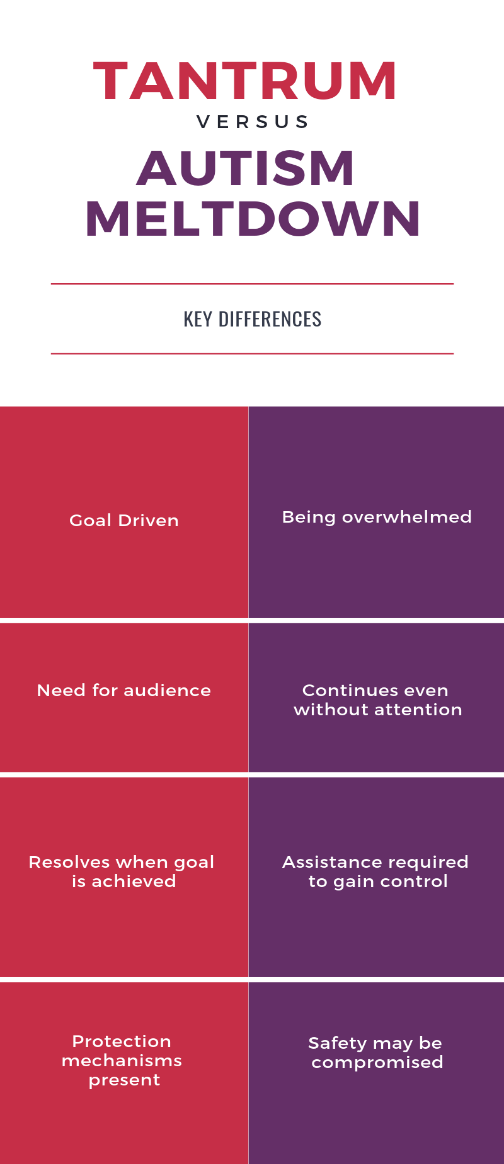How can you tell the difference between autistic meltdown from a tantrum?
- HEALIS AUTISM CENTRE

- Mar 5, 2019
- 2 min read
Many of us think that “tantrum” and “meltdown” basically means the same thing, because the child who is in the midst of having one looks almost similar and it is hard to tell them apart just by looking. Hence, knowing the fundamental differences between tantrums and meltdowns can help you better manage your child’s outbursts.
Tantrum is goal driven but Meltdown is simply being overwhelmed.
A tantrum is an out-pour of frustration when the young child is unable to get what they want or need – simply said their goal is not achieved in that moment. These outbursts are usually closely related to their physiological and social basic needs. It can be instances like not being able to buy the toy they fancy, not being able to visit the playground as and when they like or even when they do not get enough sleep.
On the other hand, an autistic meltdown happens when the young child’s sensory and emotional levels are overloaded. It may be due to too much changes and unpredictability that trigger behaviors like screaming and kicking. In serious scenarios, they may shutdown completely.
Tantrum needs audience and will be resolved when goal is achieved but Meltdown continues without attention and external help is needed for Meltdown to be controlled.
In order for the child to get what they want, they will need to be with a person whom they believe can fulfill their wishes. As such, tantrum behavior will only occur with the presence of audience. The behavior will usually stop when they get what they want or realize that they are being ignored and they will not get what they want by acting out. Thus said, the display of such behavior is controlled by the child.
On the contrary, an autistic meltdown will occur with or without audiences. This means that it will also happen to them when they are all alone. They are purely reacting to the distressing external stimuli which is out of their control. Having said this, a meltdown is unlikely to stop even when they get what they want. In fact, they may not even know what they want.
A Tantrum will not hurt a child but a Meltdown will cause harm.
As tantrum behaviors are controlled by the child, they are still mindful and alert to their surroundings. This reduces the risk level they put themselves in as they will put a stop to it should the needs arises.
However, having a meltdown is a reaction beyond the control of a child. As it can also occur without the presence of anyone, this inadvertently puts the child at a higher risk where safety may be compromised. This is why early intervention for these children is important.
Now that you are able to identify the differences, what are some of the ways to handle a tantrum or meltdown when it happens?
Stay tuned.
#autism #autismtherapy #autismcentre #meltdown #tantrum #tantrumvsmeltdown #earlyinterventionmatters
(Come speak to us now, to find out more how we can work closely with you to ensure that you will understand your child’s behaviors and learn how to manage them.)










Comments